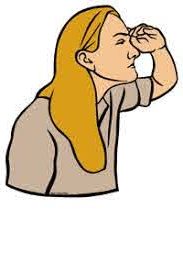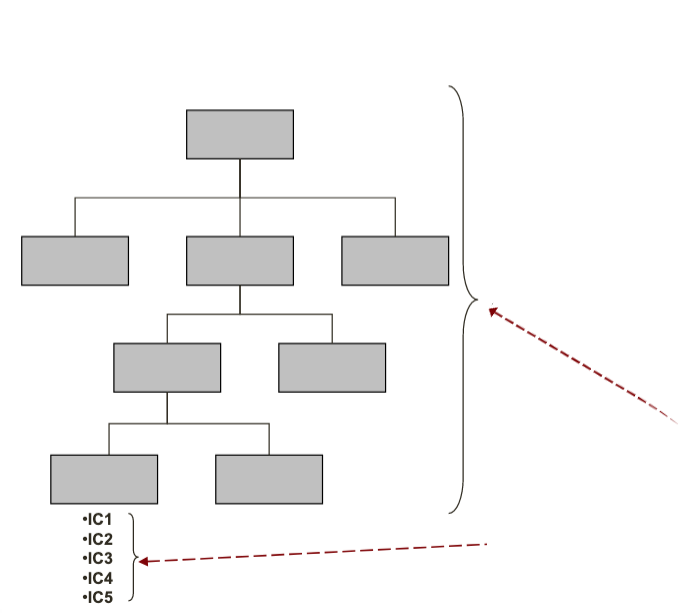Introduction to Organizational Culture
Introduction to Organizational Cultures Chapter Outline:
- Organizations – what are they?
- Definition
- Kinds of organizations
- The role of Information Systems
- Mission and Vision
- Definition
- Examples
- Organizational culture – what is it?
- Definition
- Categories
- About organizational culture
- Importance
- Change
Organizations - What are they?
Organization Definitions
- “an administrative and functional structure (as a business or political party); the personnel of such a structure” (Webster's Ninth New Collegiate Dictionary, Merriam-Webster)
- Societal construct that exists in order to meet the vision and fulfill the mission of an enterprise
Types of organizations
- Formal – defined by the enterprise
- Informal – created by the personnel
Formal organizations are all around you, your university, which may be composed of many subsystems including Class Registration and Grading, Library, Cafeteria, Security. Informal organizations may be your study groups, clubs, and may coexist with a formal organization or be totally separate. One company I worked for had a self appointed fun committee that was successful enough to be able to garner funds from the formal organization to the benefit of all the employees. They set up picnics and luncheons and other events for the staff. Sometime like the fun committee they are open and acknowledged, others may be less so.
There is an old anecdotal story about a group of workers in a Ford assembly plant that devised a tool to make their line work easier. According to the story, management found out about it and demanded the employees turn over the tool. A standoff ensued as the employees felt if they gave up the tool, management would increase their assembly line quotas and lower the piece rate thus depriving them of income.
Visions and Missions Statements
Vision – brief statement of purpose
- Why does the enterprise exist?
- What is the desired End State?

- Usually a brief statement describing the clear and inspirational long-term desired change, end state, or goal resulting from an organization or program’s work.
What do you want to be in the future, what does the future look like?
What is a Mission Statement? (from topnonprofits.com)
Your mission statement should tell your audience how you will achieve your vision. Usually a one-sentence statement describing the reason your organization or program exists. What do you do, who do you do it for, and why are you doing it.
Mission statements serve 3 primary functions, each geared to different audiences.
- Inform External Audiences of What You Do – Your mission statement is a great way to summarize what your org is about, providing context for follow-up information on programs and services.
- Focus & Motivate Your Team – Staff and volunteers want to believe in the work they do. Your mission statement should be easy for staff & volunteers to understand, remember, and own.
- Guide Strategic Planning & Decisions – By definition, you cannot prioritize everything. Your mission statement should serve as the leadership team’s guiding star when considering priorities and new initiatives.
- How the enterprise will conduct its business to be what it wants to be.
- How will we get there (vision)?
Everything an organization undertakes can be tied back to mission and vision.
Examples:
Not for Profit Organizations
Vision Statements - Whose are these?
- Our vision is a world free of cancer, and we are here to help you.
- That the United States is a humane community in which all animals are treated with respect and kindness.
- "Our Vision is a world without Alzheimer's disease."
Mission
- American Cancer Society mission statement
Old mission:
The American Cancer Society is the nationwide, community-based, voluntary health organization dedicated to eliminating cancer as a major health problem by preventing cancer, saving lives, and diminishing suffering from cancer, through research, education, advocacy, and service.
The last part clearly states Eliminating Cancer through research, education, advocacy, and service.
Click Here for more information on not for profit Mission Statements
For Profit Organizations
Additional Resources:
Ted Video on Mission and Vision statements
17 Truly Inspiring Vision and Mission Statements - Lindsay Kolowich Cox
30 Inspiring Billion-Dollar Startup Company Mission Statements - Larry Kim, CEO of MobileMonkey
Mission or Vision?

Mission or Vision?"At IKEA our vision is to create a better everyday life for the many people. Our business idea supports this vision by offering a wide range of well-designed, functional home furnishing products at prices so low that as many people as possible will be able to afford them"
Examples of Effective Vision Statements[1]
- Avon: "To be the company that best understands and satisfies the product, service and self-fulfillment needs of women, globally."
- Norfolk Southern: "Be the safest, most customer-focused and successful transportation company in the world."
- Microsoft: "Empower people through great software anytime, anyplace, and on any device."
- Reston Association: "Leading the model community where all can live, work, and play."
Examples of Effective Mission Statements[2]
- Erie Insurance: "To provide our policyholders with as near perfect protection, as near perfect service as is humanly possible and to do so at the lowest possible cost."
- NatureAir: "To offer travelers a reliable, innovative and fun airline to travel in Central America."
- Nissan: "Nissan provides unique and innovative automotive products and services that deliver superior, measurable values to all stakeholders in alliance with Renault."
- St. Paul Fire and Marine Insurance Company: "To lead the Canadian specialty commercial insurance industry through innovation, expertise and by providing products and services to satisfy the needs and exceed the expectations of our customers and business partners.
- Target: "Our mission is to make Target the preferred shopping destination for our guests by delivering outstanding value, continuous innovation and an exceptional guest experience by consistently fulfilling our Expect More. Pay Less. Brand promise.“
How do Organizations accomplish Mission? All their activities should drive to mission. For our purposes, in this course, we will talk about how organizations rely on Information Systems to accomplish mission.
System What is it? Per Merriam Webster: A system can be defined as "a regularly interacting or interdependent group of items forming a unified whole." For our purposes, that unified whole is our organization's purpose. So organizations employ systems to achieve their vision.
We will further define five components of an information system to be:
-
- Hardware
- Software
- People
- Procedures
- Data
Some of the components may be leased or rented (eg. IaaS, SaaS) and others may be outsourced. However, in whatever form, the collection of these components make up all systems we will see. And as all organizations contain some systems, most of these components will be present most of the time. (In some cases, particularly informal organizations, like clubs, hardware and software may not be present but will be replaced buy paper abstractions that serve the same purpose e.g. handwritten lists.)
Types of Enterprises
| Profit | Industrial | Medical |
| Non-Profit | Financial | Social |
| Public | Government | |
| Private | Service |
A table listing the different types of enterprises.
Formal Organizations
- Established by management
- Structure and definition
- Responsibilities
- Accountabilities
- Reflect the market space
- What is the “business”?
Established to perform
- Deliver goods and or services to customers
- When needed
- Affordable cost
Types of formal Organizations
- Departmental
- Product
- Project
- Matrix
- Applies to -
- Department
- Product
- Project
- Characteristics
- Formally structured
- Direct reporting lines clearly defined
- Each “box” represents managerial responsibility
- Individual contributors assigned below lowest “box”
Types of Organizations - Matrix
- Combination of Departmental and Project organization
- Two leadership alignments
- Professional/technical growth and development
- Work product
| Department # | Project 1 | Project 2 | Project 3 |
|---|---|---|---|
| Department 1 |
|
|
|
| Department 1 |
|
|
|
| Department 1 |
|
|
|
- Emerging organizational Philosophy
- Influences design of information systems
Informal organizations
- Created by employees
- Think “clique”
- Situation based – workplace conditions and/or problems
- “Off the books”
- (Generally) not recognized by formal organization
- Significant influence
About Organizational Cultures
Categories of organizational culture
- Hierarchy – focus on structure – Control
- IBM
- GE
- Clan – focus on relationships, teams– Collaborative, inward focused
- Oneida Silver
- Tom’s of Maine
- Zappo’s
- Market – focus on customers – Competition
- Southwest Airlines
- Adhocracy – focus on innovation (defined by lack of structure)
- Xerox PARC
- DARPA (Defense Advanced Research Projects Agency) ARPANETTask Force
- Committee
- Collegial - Full democracy - All decisions are made as a whole
- Open Source?
Apple?
Importance of organizational culture
- Consistency – of values
- Cohesiveness – of communication
- Change – because it happens
- Some Typical Characteristics of successful enterprises
- High barriers of entry
- Non-substitutable products/services
- Large market share
- Limited bargaining power for consumers
- Rivalry among competitors
- Success exists because of organizational culture, not in spite of it
- Characterized by a distinctive culture
- Sometimes emerges over time (evolutionary)
- Consciously developed
Need for an Organizational Culture
- Successful companies have “something special”
- Supersedes and transcends
- Corporate strategy
- Market presence
- Technical advantage
- Supersedes and transcends
- Existence of a strong, unique culture to
- Reduce collective uncertainty
- Create social order
- Create collective identity
- Create collective commitment
- Elucidate a common vision of the future
- Organizational culture can offset
- Burnout
- Employee loyalty (erosion)
- Loss of intellectual capital
- Absence
- Lawsuits
Change
- “the act of transforming from one state to another, including the substitution of artifacts”
- Root cause – world is dynamic; driven by kinetic energy
- Effect – need to respond to external and internal influences
- Impact – enterprise modification
- Change is constant
- Change is rapid-fire causing vacillation and uncertainty
- Political
- Technical
- Economic
- Sociological
- Cultural
Successful organizations manage change rather than being managed by it.


